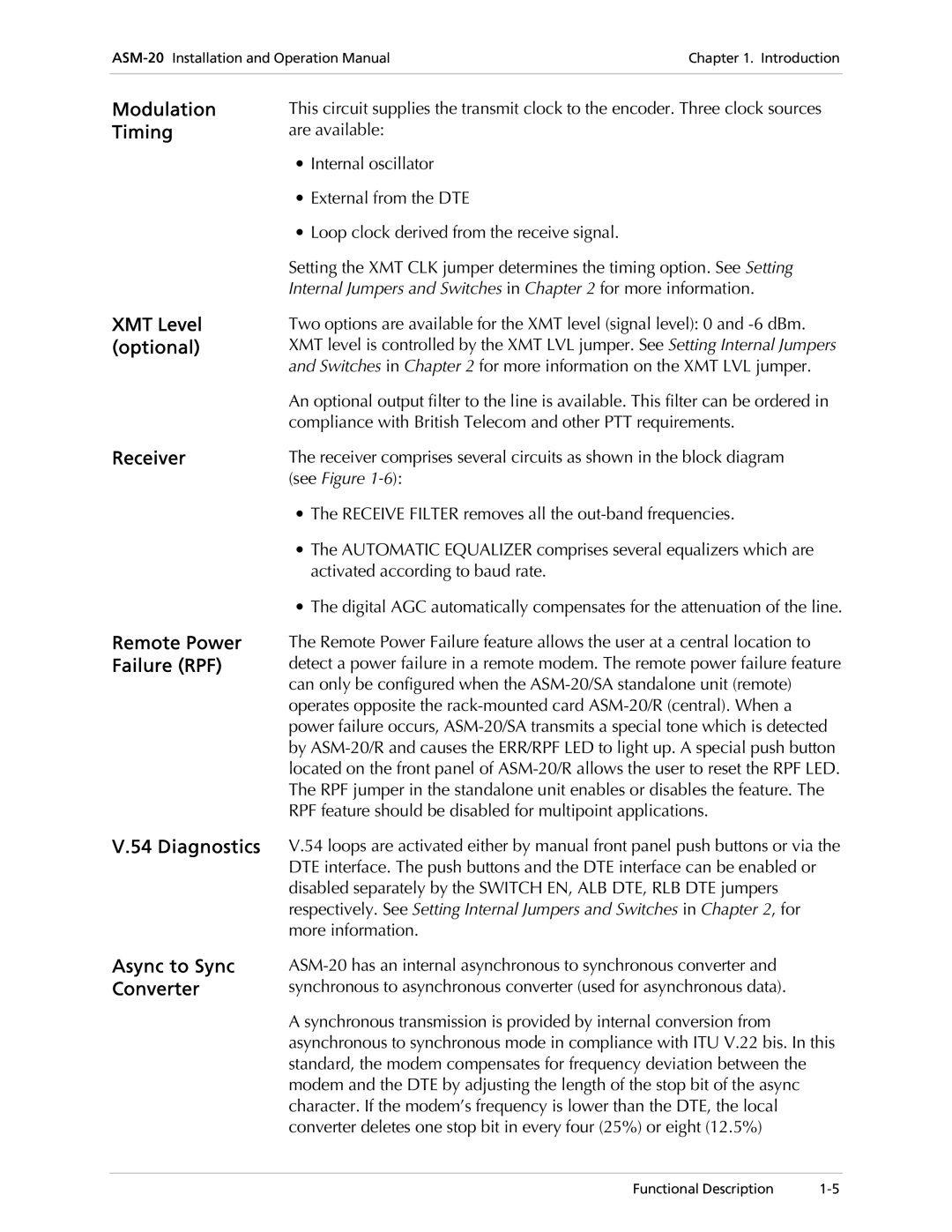Chapter 1. Introduction | |
|
|
Modulation
Timing
XMT Level (optional)
Receiver
Remote Power Failure (RPF)
V.54 Diagnostics
Async to Sync Converter
This circuit supplies the transmit clock to the encoder. Three clock sources are available:
∙Internal oscillator
∙External from the DTE
∙Loop clock derived from the receive signal.
Setting the XMT CLK jumper determines the timing option. See Setting Internal Jumpers and Switches in Chapter 2 for more information.
Two options are available for the XMT level (signal level): 0 and
An optional output filter to the line is available. This filter can be ordered in compliance with British Telecom and other PTT requirements.
The receiver comprises several circuits as shown in the block diagram (see Figure
∙The RECEIVE FILTER removes all the
∙The AUTOMATIC EQUALIZER comprises several equalizers which are activated according to baud rate.
∙The digital AGC automatically compensates for the attenuation of the line.
The Remote Power Failure feature allows the user at a central location to detect a power failure in a remote modem. The remote power failure feature can only be configured when the
V.54 loops are activated either by manual front panel push buttons or via the DTE interface. The push buttons and the DTE interface can be enabled or disabled separately by the SWITCH EN, ALB DTE, RLB DTE jumpers respectively. See Setting Internal Jumpers and Switches in Chapter 2, for more information.
A synchronous transmission is provided by internal conversion from asynchronous to synchronous mode in compliance with ITU V.22 bis. In this standard, the modem compensates for frequency deviation between the modem and the DTE by adjusting the length of the stop bit of the async character. If the modem’s frequency is lower than the DTE, the local converter deletes one stop bit in every four (25%) or eight (12.5%)
Functional Description |
